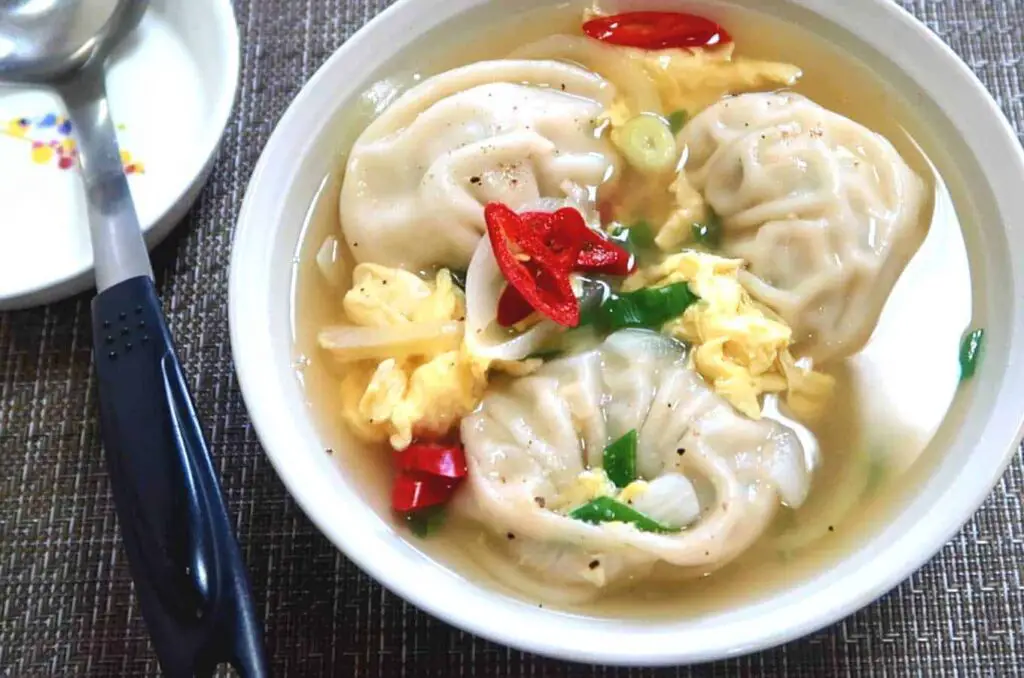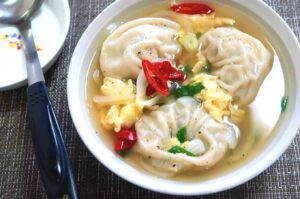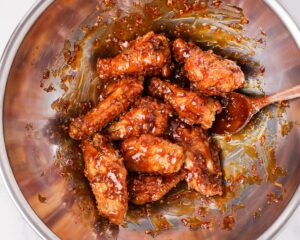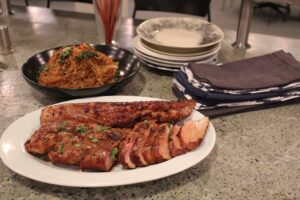Korean cuisine offers a rich tapestry of flavors and dishes that are vibrant and satisfying, with one of the standout favorites being Mandu, or Korean dumplings. These dumplings are a beloved dish enjoyed in many ways—boiled, steamed, or fried—and are perfect for everything from a hearty family meal to a festive gathering. Here’s an in-depth look at how to make Korean dumplings, along with a traditional recipe to try at home.
Ingredients
To create authentic Korean dumplings, you’ll need the following ingredients:
Wrapper:
30-40 dumpling wrappers
Filling:
200g ground pork or beef
200g tofu, drained and crumbled
1 cup kimchi, finely chopped
1/4 cup green onions, finely chopped
1 tablespoon garlic, minced
1 tablespoon ginger, minced
1 tablespoon soy sauce
1 tablespoon sesame oil
1 teaspoon sugar
Salt and pepper to taste
For dipping sauce:
2 tablespoons soy sauce
1 tablespoon vinegar (rice or apple cider)
A pinch of Korean chili flakes (optional)
1 teaspoon sesame seeds
1 teaspoon sesame oil
1/2 teaspoon sugar
Instructions
Prepare the Filling:
In a large bowl, combine the ground meat, crumbled tofu, chopped kimchi, green onions, garlic, and ginger.
Add soy sauce, sesame oil, sugar, salt, and pepper. Mix thoroughly until the ingredients are well incorporated.
Assemble the Dumplings:
Place a dumpling wrapper on a clean surface. Spoon about 1 tablespoon of the filling into the center of the wrapper.
Moisten the edges of the wrapper with water, fold in half, and seal by pinching the edges together or creating pleats for a decorative touch.
Cook the Dumplings:
For boiled dumplings: Bring a large pot of water to a boil. Add the dumplings and cook for about 5 to 7 minutes, or until they float to the surface and are fully cooked.
For steamed dumplings: Arrange the dumplings in a steamer lined with parchment paper or cabbage leaves. Steam for about 15 to 20 minutes.
For fried dumplings: Heat oil in a frying pan over medium heat. Add the dumplings and fry until golden brown on both sides.
Prepare the Dipping Sauce:
Combine all the ingredients for the dipping sauce in a small bowl and stir well.
Serving:
Serve the cooked dumplings hot with the dipping sauce on the side.
Tips for Perfect Korean Dumplings
Wrapper Choices: You can buy pre-made dumpling wrappers from Asian grocery stores for convenience. If you’re feeling adventurous, making homemade wrappers can add an extra special touch to your mandu.
Variations: Feel free to experiment with different fillings. Common variations include using chopped vegetables, shrimp, or a combination of different meats.
Storage: Uncooked dumplings can be frozen for later use. Place them in a single layer on a baking sheet to freeze, and then transfer to a freezer bag.
Mandu offers a delicious glimpse into the heart of Korean culinary traditions, blending unique textures and flavors that are sure to delight. Whether you prefer your dumplings steamed, boiled, or fried, each bite is a testament to the simple yet profound pleasures of Korean cooking. Enjoy the process and the delicious results!
Exploring Regional Variations
Korean dumplings, or Mandu, are not just limited to the standard recipe. Across different regions in Korea, you’ll find variations that reflect local tastes and ingredients. For instance:
Pyongyang Mandu: Originating from North Korea, this variation is known for its large size and the use of fish as a primary ingredient along with tofu and vegetables. It’s typically boiled and served in a light broth, making it a warming, comfort dish.
Busan Mandu: In the southern coastal city of Busan, seafood plays a significant role in the local cuisine. Here, Mandu often includes ingredients like chopped squid or shrimp, offering a fresh, oceanic twist to the traditional dumpling.
Celebrating with Mandu
Mandu plays a significant role in Korean festive traditions. During the Lunar New Year (Seollal), making and eating Mandu is a popular activity. This tradition is rooted in the belief that the dumplings, resembling small pouches of wealth, will bring prosperity for the coming year. Families often gather together to prepare Mandu, making the process a communal and celebratory event.
Health Benefits
Beyond their delicious taste, Korean dumplings offer a range of health benefits, especially when filled with a variety of vegetables and lean proteins. Tofu and vegetables provide essential nutrients and fibers, while the use of spices like ginger and garlic adds antioxidants and anti-inflammatory properties. Opting for steaming or boiling over frying can also make Mandu a healthier choice, reducing the fat content.
Korean dumplings are a versatile and delightful dish that embodies the spirit of Korean cuisine. They are a testament to the adaptability and rich cultural heritage of Korean culinary practices, with each region and each family offering its own unique spin on the traditional recipe. Whether you are cooking for a festive occasion or simply looking for a comforting meal, Mandu provides a perfect blend of flavor, tradition, and nourishment.
Now that you have this recipe and knowledge at your fingertips, why not try making your own Mandu at home? Whether you stick to the traditional fillings or experiment with local flavors, you’re in for a treat. Enjoy the art of dumpling-making and the delicious rewards it brings!




